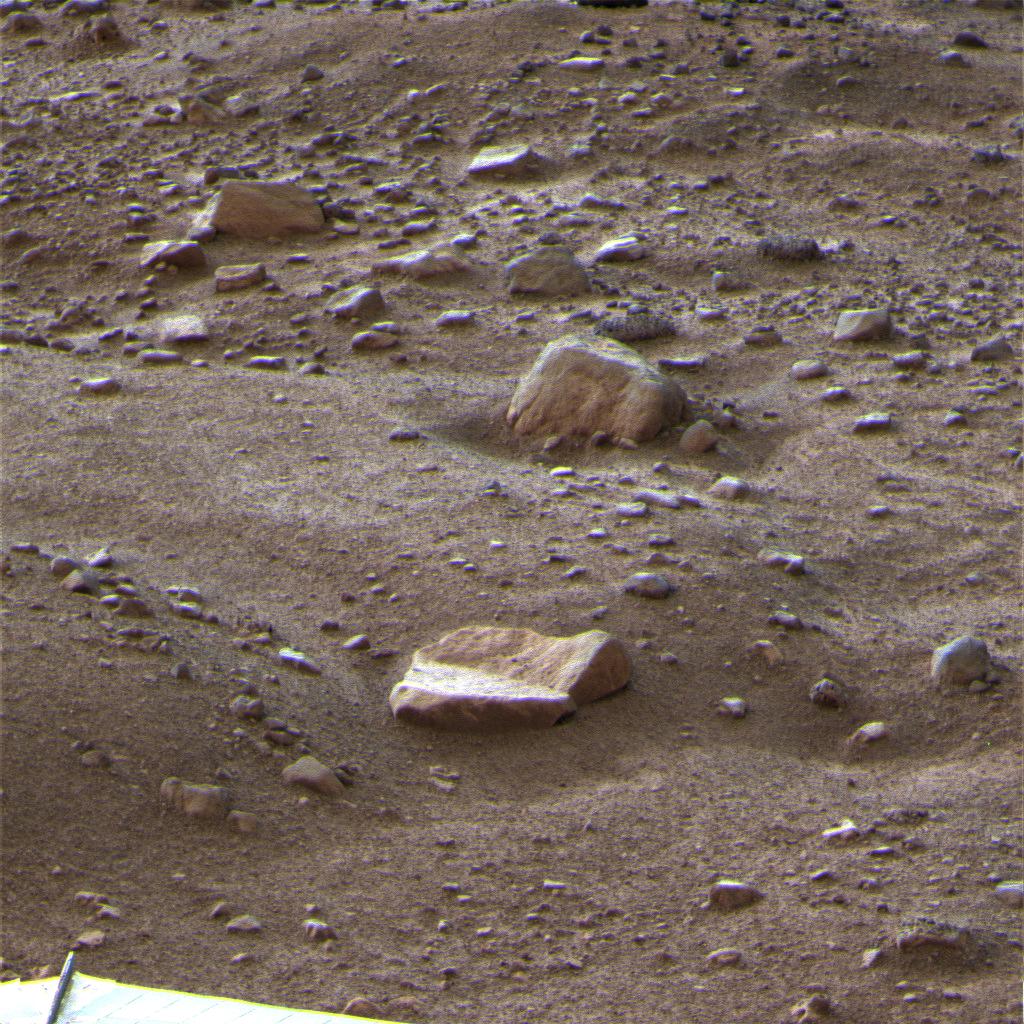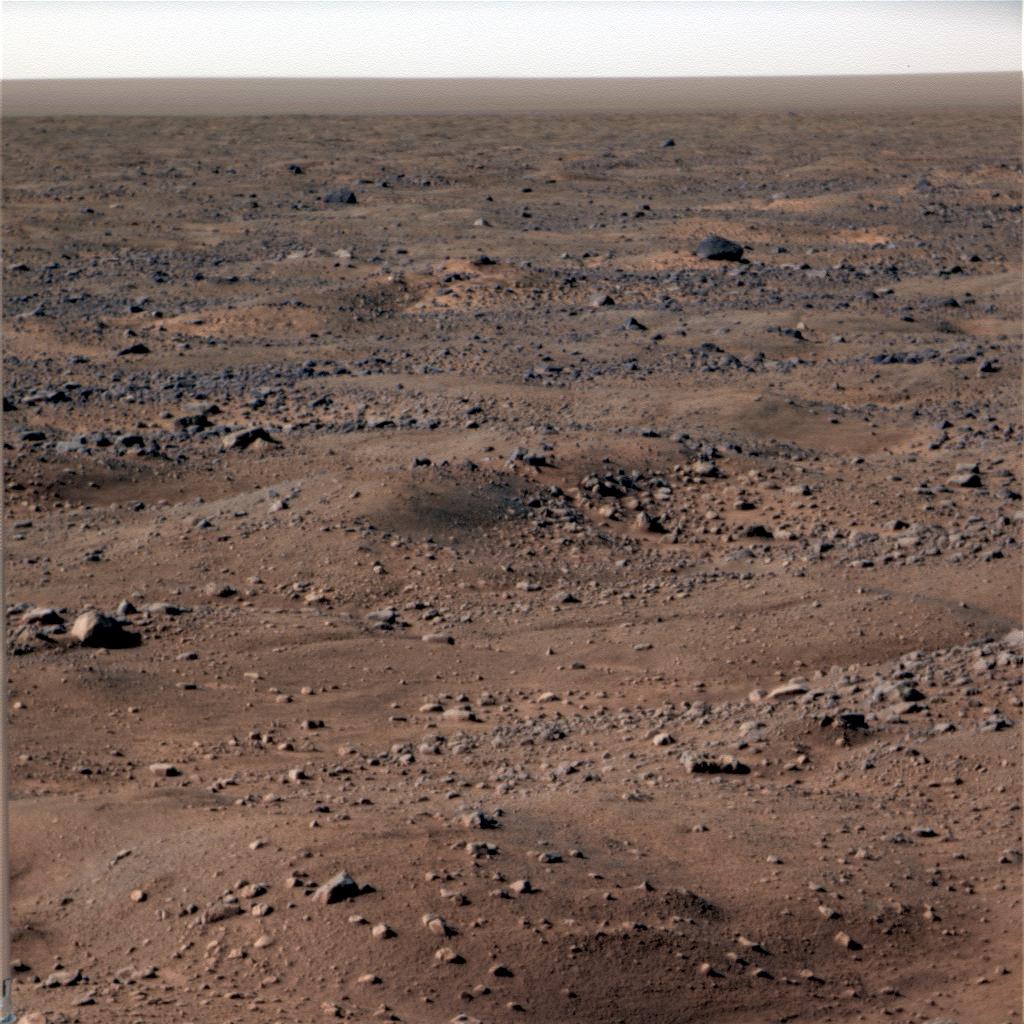Post-mission analysis of Phoenix Mars lander data is turning up strong new "smoking gun evidence" that the spacecraft discovered liquid water on the Red Planet. The data that Phoenix imaged and touched liquid water is a stunning discovery that directly relates to the potential for current or past life on Mars.
Aside from the direct search for life itself, it has been the search for liquid water that could support life that has been the "Holy Grail" of Mars exploration since the 1960s.
The discovery has historic implications far beyond the lander's earlier finding of hard-frozen water ice. That's because as far as science knows today, life can exist in the salty brine-like water found by Phoenix, but it can not form in hard-frozen water also found by Phoenix at its north polar landing site, where nighttime winter temperatures are routinely -100 degrees F.
In an equally important finding, the Phoenix team says the data collected indicate that such liquid water is not only at the landing site, but likely exists currently at many locations around Mars.
The findings are compiled in a new report "The Physical and Thermodynamic Evidence for Liquid Water on Mars." The report will be presented March 23 at the 40th Lunar and Planetary Science Conference in Houston.
It has been signed by 22 members of the Phoenix science team and the mission's principal investigator, Peter Smith, of the University of Arizona, who led the U of A/Jet Propulsion Laboratory team.
It is imagery of splotches of Martian material on the spacecraft's landing gear that moved, then merged, that convinced the nearly two dozen Phoenix scientists that "liquid saline-water exists in areas disturbed by the lander," says the report. This is described as "smoking gun" evidence for the presence of liquid water at the landing site.
This stunningly significant finding of contemporary brine-like water on surface of Mars has major implications for the potential for current Martian life. It does not guarantee life, however, because the fluid could be too fleeting and salty for life.
But it does also help to explain the apparently recent erosional features seen by the Mars Reconnaissance Orbiter. Scientists earlier believed all of the water carved features on Mars were created billions of years ago’ but many of those features did not fit with such old geology.
The lander data provides both thermodynamic and physical evidence for the widespread existence of current high salt content water on Mars, say the Phoenix investigators.
As is anything involving the potential for life on another planet, the data will be hotly debated.
But the new Phoenix findings that have come together since the lander ceased functioning in early November and are gaining remarkably wide support. The science team members involved in the findings represent laboratories and universities in Canada and Europe as well as the U.S.
Although Phoenix never directly observed liquid water in the soil or subsurface water ice, scientists believe the material was there and was splashed up on the landing struts by the spacecraft's descent engines at touchdown on May 25.
Based on multiple Phoenix and other Mars data sources, the science team says it is confident in saying "we hypothesize that liquid saline-water is [currently] common on Mars."
Science team members say in the paper that the finding will affect virtually every aspect of Mars research, including new Mars spacecraft development beyond the Mars Science Laboratory rover set for launch in 2011.
"This finding has important implications for the stability of liquid water, weather, mineralogy, geochemistry and the habitability of Mars," says the paper.
The primary author is Nilton Renno of the University of Michigan. The findings also draw heavily on Ames Research Center studies by Aarn Zent. His work found that water molecules in the Martian atmosphere condense as thin films of water on soil particles on the ground’ and in this case on the Phoenix landing gear.
A key factor in maintaining enough unfrozen moisture in the soil to make it habitable is the presence of perchlorate salts that greatly decrease the freezing temperature of water.
The perchlorate found by Phoenix keeps enough of the moisture in a wet, rather than frozen state that it could support life forms like those found on Earth in extremely dry locations like the Dry Valleys of Antarctica, says this and other Phoenix data to be presented at LPSC.
There is also other strong Earth- and Mars-based evidence supporting the brine-water findings for Mars.
Such brines are just 2-10 centimeters below the surface in the Antarctica Dry Valleys.
The rovers Spirit and Opportunity have also found evidence of such brines from periods long ago on Mars. "And the presence of brines on Mars is consistent with the evidence of aqueous alteration in Mars meteorites while they were on Mars," the science team found.
"Finally, brines have a large dielectric constant that can cause attenuation of radar signals. This attenuation of radar seems to occur often as measured by the NASA Mars orbiters," says the Phoenix paper.
Phoenix died in November, overwhelmed by increasing cold winter temperatures. It is unlikely, but possible, the spacecraft will come back to life in October when sunlight is at the maximum. But engineers doubt it because they believe Phoenix will have been encased in carbon dioxide ice that will have snapped off its solar arrays.





